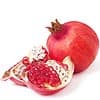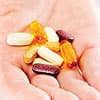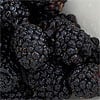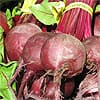
What's hot
What's hot
News flashes are posted here frequently to keep you up-to-date with the latest advances in health and longevity. We have an unparalleled track record of breaking stories about life extension advances.
Adherence to nutritional recommendations associated with better cognitive performance
French researchers analyzed data from 2,135 participants who were between the ages of 45 and 60 upon enrollment in the Supplementation with Antioxidant Vitamins and Minerals (SU.VI.MAX) study, which was initially designed as a double-blinded, placebo-controlled trial to test the efficacy of supplementation with antioxidant vitamins and minerals on the incidence of cancers, heart disease and mortality over an eight year period. Over half of the subjects were also included in SU.VI.MAX 2, an ongoing study of the effects of nutrition on aging. French National Nutrition and Health Program Guideline Scores (PNNS-GS), which evaluated adherence to nutritional and physical activity recommendations, were calculated upon enrollment between 1994 and 1996. These guidelines included recommendations for whole grains, fat and other dietary components, as well as exercise. Neuropsychologic testing was conducted between 2007 and 2009 to assess cognitive performance. An association was revealed between higher PNNS-GS scores and better outcomes of tests that evaluated verbal memory. The associations remained significant when individual score components (such as exercise) were removed from the analysis, indicating that overall behavior may be more important to help preserve verbal memory than specific foods or exercise alone. “To our knowledge, this study is the first to show that a better adherence to nutritional guidelines is associated with better cognitive performance in young elderly persons, especially with verbal fluency and episodic memory performance,” the authors conclude. “Our findings are in favor of a potential beneficial effect of midlife compliance with nutritional guidelines on verbal memory, which is a cognitive domain that is particularly vulnerable to dementia.” —D Dye
Calorie restriction prevents hearing loss in animal study
For the current study, University of Wisconsin-Madison professor of genetics Thomas Prolla and his associates studied the effect of calorie restriction in mice that develop age-related hearing loss, which is associated with free radical damage to the cochlea’s cells. By restricting the animals’ diets, hearing loss was prevented; however, the technique was ineffective in mice lacking the mitochondrial enzyme Sirt3, a member of the sirtuin family, indicating involvement of the enzyme in calorie restriction’s benefits "Hearing loss is associated with the loss of specific cell types in the cochlea," Dr Prolla explained. "And hearing loss is prevented through caloric restriction." Other sirtuins have been shown to be involved in the benefits conferred by calorie restriction, yet less is known about Sirt3. Sirt3 affects intracellular structures known as mitochondria, which are the cells’ power plants. When Sirt3 is increased by calorie restriction, the mitochondria produce less free radicals, which damage cells and contribute to the signs of aging. "We're getting closer and closer to a good understanding of how caloric restriction works," Dr Prolla stated. "This study is the first direct proof for a mechanism underlying the antiaging effects we observe under caloric restriction." "This is the strongest and most direct link that caloric restriction acts through mitochondria," he added. "Sirt3 is playing a surprisingly important role in reprogramming mitochondria to deal with an altered metabolic state under caloric restriction." —D Dye
Pomegranate suggested for dialysis patients
Batya Kristal, MD of the Technicon-Israel Institute of Technology in Haifa, along with Lilach Shema and colleagues randomized 101 patients undergoing hemodialysis three times per week to receive 100 milliliters pomegranate juice or a placebo drink prior to each dialysis session for one year. Blood tests measured protein oxidation, inflammation markers and other factors. At the study’s conclusion, participants who received pomegranate had lower levels of oxidative stress and inflammation, and were less likely to have been hospitalized due to infections. In other analyses, pomegranate juice drinkers had improved cardiovascular risk factors and fewer cardiovascular events, which is of significance for chronic kidney disease patients who die mainly from cardiovascular disease and infections. The authors suggest that consuming a measured amount of pomegranate juice with a safe level of potassium might help improve the rate of complications in kidney dialysis patients, however, they stress that the risk of potassium overload is an important consideration. "Considering the expected epidemic of chronic kidney disease in the next decade, further clinical trials using pomegranate juice aimed at reducing the high cardiovascular morbidity of chronic kidney disease patients and their deterioration to end-stage renal disease should be conducted," Dr Kristal recommended. —D Dye
Vitamin D receptor agonist lowers PSA in prostate cancer patients
The new drug, inecalcitol, is a synthetic derivative of the active metabolite of vitamin D3 known as calcitriol. Calcitriol, however, has one-tenth the potency of inecalcitol and 100 times the toxicity. The effects of inecalcitol combined with the standard therapy of docetaxel and prednisone were evaluated in 54 prostate cancer patients. Dr Medioni and his colleagues found that 83 percent of those treated experienced a 30 percent or greater decline in PSA within three months. "The PSA responses with this combination are encouraging," stated Dr Medioni, who heads the Clinical Oncology Centre for Early Trials at the Hôpital Européen Georges Pompidou in Paris. "It compares favorably with historical data showing that normally 65 percent of patients respond when treated with docetaxel alone. Furthermore, PSA levels declined by 50 percent in 67 percent of patients treated with inecalcitol, and biochemical relapse did not occur for at least 169 days." “This study was of a small group of patients and so it is difficult to extrapolate to the wider population of prostate cancer patients; however, the majority of men had very advanced disease and, therefore, it is very encouraging to see PSA levels dropping in such a high proportion of patients and a time to biochemical relapse of nearly half a year,” he added. “The trial has confirmed that inecalcitol is the first Vitamin D receptor agonist that can be given daily at a high antiproliferative dose without causing hypercalcemia." —D Dye
Fisetin shows promise in Huntington disease experiments
Salk Cellular Neurobiology Laboratory senior staff scientist Pamela Maher, PhD and her associates had previously found that fisetin, which occurs in vegetables and fruit such as strawberries, activates the Ras/ERK pathway, which is important in brain development and cognition, and is less active in Huntington disease. Administration of fisetin to cultured nerve cells that expressed a form of the huntingtin protein which is mutated in Huntington disease resulted in the survival of cells whose numbers would have otherwise been diminished by half within a few days. In another experiment, fruit flies that overexpressed mutant huntingtin protein in brain neurons, which reduces life span and causes defective eye development, regained their normal life span and had less eye defects after consuming fisetin. A third experiment in a mouse model of Huntington disease found a 30 percent increase in life span and a delay in motor defects in animals that received fisetin. Further research by the team revealed a similar benefit for resveratrol, a polyphenol related to fisetin. "Fisetin, resveratrol and related compounds might be useful for the treatment of Huntington disease by virtue of their unique ability to activate ERK," the authors conclude. Dr Maher noted that in Huntington disease "Cells are damaged and dying before there are overt symptoms. If patients know they have the mutation, then they could potentially start treatment before the start showing symptoms, which might be more effective than waiting for the symptoms to appear, as many do now." —D Dye
Amyloid beta affects antioxidant enzyme
Chemistry professor Jerry Yang, along with bioengineering graduate student Lila Habib, administered amyloid beta, a toxic compound found in the plaques that form in the brains of Alzheimer’s disease patients, to cultured neural cells. They observed that amyloid beta reduced the activity of an antioxidant enzyme formed in the body known as catalase. Catalase had previous been identified within Alzheimer’s disease plaques, and normally helps protect against the type of damage observed in the disease. "We were able to determine that amyloid beta and this antioxidant enzyme, catalase, interact, and that this interaction harmed catalase so it wasn't able to perform its physiological function: to degrade hydrogen peroxide into oxygen and water," Habib stated. By coating amyloid with a molecule that prevents it from interacting with other proteins, the researchers were able to restore catalase activity, which caused intracellular levels of hydrogen peroxide, a pro-oxidant compound, to return to normal. The substance used in the coating, developed by Dr Yang’s laboratory, is a candidate drug for the treatment of Alzheimer’s disease. "Amyloid seems to cause damage to cells,” Dr Yang explained. "We have reported in a very detailed way one potential interaction of how amyloid can cause disease, and we found a way to stop it." "Not only are we learning more about the disease, but we are also developing a potential strategy for treatment," he remarked. —D Dye
Greater isoflavone intake associated with protection against breast cancer in premenopausal women
Dr Weaver and her associates compared 683 newly diagnosed breast cancer patients with 611 women with no history of the disease. Dietary questionnaire responses were evaluated for the intake of total and specific soy isoflavones from food. Participants whose intake of total isoflavones was among the top one-third of participants were found to have a 30 percent lower risk of invasive breast cancer and a 60 percent lower risk of grade 1 tumors than those whose intake was lowest. When individual isoflavones were analyzed, women whose intake of genistein or glycetein was highest had a risk of a grade 1 tumor that was 60 percent lower than with women whose intake was among the lowest third. Having a high glycetein intake was also associated with a 60 percent lower risk of any breast cancer compared to the lowest group. When the women were examined according to menopausal status, premenopausal women whose isoflavone intake was highest had a 30 percent lower risk of stage 1 breast cancer, a 70 percent lower risk of having a tumor larger than 2 centimeters, and a 60 percent less risk of stage 2 disease. An association between isoflavone intake and breast cancer was not observed in postmenopausal women. “This study was unique in that we looked at specific subtypes of breast cancer, and found a suggestion that menopausal status may play a role in risk,” Ms Weaver commented. “We definitely saw a reduction that deserves further investigation.” —D Dye
An ounce of prevention . . .
The current double-blinded study included 485 healthy participants aged 55 and older with age-related cognitive decline. Participants were randomized to receive 900 milligrams DHA or a placebo daily for 24 weeks. Subjects who received DHA had better results on tests of memory and learning compared to the placebo group at the end of the treatment period. The finding suggests that DHA may be more helpful for individuals with mild memory complaints than for those with Alzheimer’s disease whose brains may have already accrued significant damage. "The results of this study are very encouraging for those consumers concerned about maintaining memory,” commented Duffy MacKay, ND of the Council for Responsible Nutrition. “We know that lower DHA levels are associated with cognitive decline in healthy elderly and Alzheimer's patients, and higher DHA levels help reduce the risk of Alzheimer's disease. Memory loss, dementia and the development of Alzheimer's disease are prominent health concerns for older individuals. The more we learn about the valuable role DHA plays in supporting brain function, the more options aging Americans have towards managing cognitive decline." "This study reinforces the principle that consumers will reap the most benefit from their DHA supplements—and many supplements—when they are taken over time and before a health concern is imminent," he added. —D Dye
Antioxidant supplementation during pregnancy decreases adiposity in animal offspring
Sarbattama Sen of the University of Pennsylvania and Rebecca Simmons of Tufts University gave female rats one of the following diets: a control chow diet, a control diet plus the antioxidants selenium and vitamins A, C and E; a Western style diet that contained high amounts of fat and sugar and reduced fiber, or a Western diet plus the antioxidants. The animals were mated at 12 to 14 weeks of age and their offspring were weaned onto the control diet. The embryos, fetuses and newborns of rats that received the Western diet showed increased inflammation and oxidative stress. Beginning at two weeks of age, offspring of rats fed the Western diet showed increased adiposity, alterations in fat tissue expression of proadipogenic and lipogenic genes, and impaired glucose tolerance compared to animals that received the control diet. However, offspring from rats given Western diets supplemented with antioxidants had less adiposity and glucose tolerance was normalized. “Our finding that administration of an antioxidant supplement given to the dam reverses oxidative stress and completely prevents the development of adiposity and glucose intolerance in the offspring suggests that oxidative stress plays an important role in the development of obesity,” the authors write. “Although it is known that obesity is associated with inflammation, this study suggests that inflammation plays a role in intergenerational obesity and implicates oxidative stress as a central factor in fetal programming of obesity in the offspring,” they conclude. —D Dye
Black raspberries offer protection against colorectal cancer in mouse model
"We saw the black raspberry as a natural product, very powerful, and easy to access," stated University of Illinois College of Medicine assistant professor of pathology Wancai Yang, who is the lead author of the report. Dr Yang’s team supplemented mice from both strains with a Western type diet containing a high amount of fat and low levels of vitamin D and calcium, or the same diet consisting of 10 percent freeze-dried black raspberry powder for a period of 12 weeks. In the mice bred to develop colorectal tumors, the incidence of tumors was reduced by 45 percent and the number of tumors was lowered by 60 percent among those that received black raspberries compared with animals that were fed unsupplemented diets. The mechanism involved was discovered to be the suppression of the protein beta-catenin, which binds to the APC gene that is modified in this strain. Among the mice that were bred to develop colitis, tumor incidence and number in those that received berry-enhanced diets were half of that observed in the non-supplemented mice, due to a reduction in inflammation that leads to tumor initiation. “Collectively, our data suggest that black raspberries are highly effective in preventing intestinal tumor development in both Apc1638+/− and Muc2−/− mice through targeting multiple signaling pathways,” the authors conclude. The team plans to test the benefits of the fruit in human trials. —D Dye
Beets boost brain blood
Researchers at Wake Forest University in Winston-Salem, North Carolina enrolled 14 adults whose age averaged 74.7 years. The participants were given a breakfast with or without 16 ounces of beet juice for two days. On the second day of the study, brain blood flow was assessed via magnetic resonance imagery (MRI) and blood nitrite levels measured. The diets were switched on the third and fourth days, and MRI exams and blood testing were repeated. Blood flow to the white matter of the brain’s frontal lobes, the area that degenerates in dementia, was improved following the high-nitrate breakfast. The study is the first to reveal an increase in brain blood flow following beet juice ingestion. "There have been several very high-profile studies showing that drinking beet juice can lower blood pressure, but we wanted to show that drinking beet juice also increases perfusion, or blood flow, to the brain," coauthor Daniel Kim-Shapiro commented. "There are areas in the brain that become poorly perfused as you age, and that's believed to be associated with dementia and poor cognition." "I think these results are consistent and encouraging – that good diet consisting of a lot of fruits and vegetables can contribute to overall good health," added senior investigator and Wake Forest Department of Health and Exercise Science associate professor Gary Miller. —D Dye
Curcumin may offer protection against liver fibrosis
Youcai Tang of Zhengzhou University in Henan, China and Anping Chen, PhD, who is the director of research at Saint Louis University’s department of pathology, recently reported that leptin stimulates liver stellate cell activation, contributing to liver fibrosis. Leptin, a hormone which increases during obesity and diabetes, controls food intake and energy expenditure. Drs Chen and Tang’s current research found that curcumin eliminated the leptin’s effect of reducing intracellular fatty acids and triglycerides that occurs during fibrosis in hepatic stellate cells. “The phytochemical abrogated the impact of leptin on inhibiting the activity of AMP-activated protein kinase (AMPK) in HSCs in vitro,” the authors write. “The activation of AMPK resulted in inducing expression of genes relevant to lipid accumulation and increasing intracellular lipids in hepatic stellate cells in vitro.” "Leptin plays a critical role in the development of liver fibrosis," Dr Chen explained. "My laboratory studies the molecular mechanism of liver fibrosis and is searching for natural ways to prevent and treat this liver damage. While research in an animal model and human clinical trials are needed, our study suggests that curcumin may be an effective therapy to treat and prevent liver fibrosis, which is associated with non-alcoholic steatohepatitis (NASH)." —D Dye
|

 Following dietary and exercise guidelines may help to protect verbal memory according to an article published online on November 24, 2010 in the
Following dietary and exercise guidelines may help to protect verbal memory according to an article published online on November 24, 2010 in the  An article published online on November 18, 2010 in the journal
An article published online on November 18, 2010 in the journal  On November 18, 2010, at the American Society of Nephrology's 43rd Annual Meeting and Scientific Exposition held in Denver, it was reported that drinking pomegranate juice could help reduce the development of complications in kidney dialysis patients. Previous research involving pomegranate indicates that the fruit is a good source of antioxidants, and helps lower blood pressure and cholesterol in patients with hypertension and diabetes.
On November 18, 2010, at the American Society of Nephrology's 43rd Annual Meeting and Scientific Exposition held in Denver, it was reported that drinking pomegranate juice could help reduce the development of complications in kidney dialysis patients. Previous research involving pomegranate indicates that the fruit is a good source of antioxidants, and helps lower blood pressure and cholesterol in patients with hypertension and diabetes.  At the 22nd European Organisation for Research and Treatment of Cancer, National Cancer Institute and American Association for Cancer Research (EORTC-NCI-AACR) Symposium on Molecular Targets and Cancer Therapeutics held in Berlin, Dr Jacques Medoni reported that a new drug that targets the vitamin D receptor on cancer cells reduces prostate specific antigen in men with hormone-resistant
At the 22nd European Organisation for Research and Treatment of Cancer, National Cancer Institute and American Association for Cancer Research (EORTC-NCI-AACR) Symposium on Molecular Targets and Cancer Therapeutics held in Berlin, Dr Jacques Medoni reported that a new drug that targets the vitamin D receptor on cancer cells reduces prostate specific antigen in men with hormone-resistant  Researchers from the Salk Institute for Biological Studies and the University of California, Irvine report the discovery of the ability of the compound fisetin to slow disease progression and reduce premature death in experimental models of Huntington disease, a neurodegenerative disorder. The findings were published online on October 15, 2010 in Human Molecular Genetics.
Researchers from the Salk Institute for Biological Studies and the University of California, Irvine report the discovery of the ability of the compound fisetin to slow disease progression and reduce premature death in experimental models of Huntington disease, a neurodegenerative disorder. The findings were published online on October 15, 2010 in Human Molecular Genetics. In an article scheduled for publication in the December, 2010 issue of the
In an article scheduled for publication in the December, 2010 issue of the  In a presentation at the Ninth Annual American Association for Cancer Research Frontiers in Cancer Prevention Research Conference, held November 7 through 10, 2010 in Philadelphia, Ann Weaver of the Roswell Park Cancer Institute reported a protective effect for soy isoflavones against
In a presentation at the Ninth Annual American Association for Cancer Research Frontiers in Cancer Prevention Research Conference, held November 7 through 10, 2010 in Philadelphia, Ann Weaver of the Roswell Park Cancer Institute reported a protective effect for soy isoflavones against  The November, 2010 issue of
The November, 2010 issue of  An article published online on September 7, 2010 in the journal
An article published online on September 7, 2010 in the journal  In an article published online on November 2, 2010 in the journal
In an article published online on November 2, 2010 in the journal  An article published online on October 15, 2010 in the Nitric Oxide Society journal
An article published online on October 15, 2010 in the Nitric Oxide Society journal  Researchers at Saint Louis University School of Medicine in Missouri report in the September, 2010 issue of the journal
Researchers at Saint Louis University School of Medicine in Missouri report in the September, 2010 issue of the journal